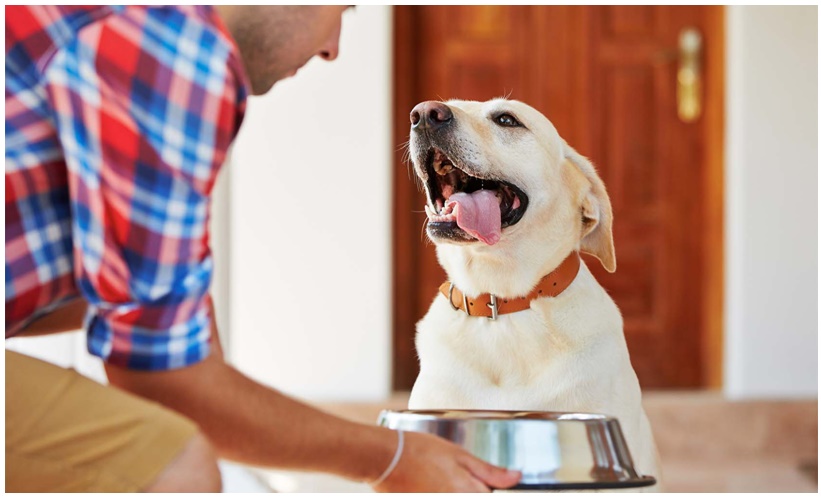Every dog owner encounters feeding challenges at some point. Whether it’s messy eating habits, digestive issues, or mealtime reluctance, these problems can be frustrating and concerning. The good news is that most common feeding issues have straightforward solutions that can transform mealtime from a source of stress into a pleasant routine.
Problem 1: Constant Food and Water Spills
Few things are more annoying than constantly cleaning up spilled water and scattered kibble around your dog’s feeding area. Floor-level bowls are notorious for tipping over, especially with enthusiastic eaters or dogs who like to “play” with their bowls. The mess isn’t just inconvenient, it can damage flooring, create odors, and attract pests.
The Solution: Stability is key. Heavy ceramic bowls help, but positioning matters just as much. Elevated feeding stations provide a stable base that’s much harder to tip over than lightweight bowls sitting directly on slippery floors. The raised position also means your dog is less likely to step into their bowls or knock them over while moving around the feeding area. A single raised dog bowl can dramatically reduce spills and keep your floors cleaner with minimal effort.
Problem 2: Eating Too Fast
Speed eating isn’t just messy, it’s dangerous. Dogs who gulp their food rapidly are at higher risk for choking, vomiting, and bloat. You might notice your dog seems uncomfortable after meals, regurgitates food shortly after eating, or has frequent digestive upset.
The Solution: The eating position influences pace more than many owners realize. When dogs eat from an elevated position, they naturally tend to eat more slowly and deliberately. The slight change in posture encourages more measured bites and better chewing. For extreme cases, combine elevation with a slow-feeder bowl design. You can also try spreading meals across more frequent, smaller portions throughout the day.
Problem 3: Reluctance to Eat or Leaving Food Unfinished
When a previously enthusiastic eater suddenly becomes picky or starts leaving food in their bowl, it’s understandably concerning. While medical issues should always be ruled out by a veterinarian, physical discomfort during eating is a surprisingly common culprit that’s often overlooked.
The Solution: If your vet has cleared your dog of health problems, consider whether the physical act of eating might be uncomfortable. Dogs with neck pain, arthritis, or spinal issues may associate mealtime with discomfort, leading to reduced appetite. Elevating the food bowl to a comfortable height can eliminate pain associated with bending, making your dog more willing to eat full meals. Many owners are surprised when their “picky” eater’s appetite returns after this simple adjustment.
Problem 4: Regurgitation Shortly After Eating
Regurgitation differs from vomiting, it’s the passive expulsion of undigested food shortly after eating, without the abdominal contractions associated with vomiting. While occasional regurgitation can happen to any dog, frequent episodes warrant attention.
The Solution: Eating position plays a crucial role in how effectively food moves through the esophagus into the stomach. When dogs eat with their heads lowered, they’re working against gravity. An elevated feeding position allows gravity to assist the natural movement of food through the digestive tract. This is particularly important for breeds with longer esophagi or dogs with conditions affecting esophageal motility. Combine proper bowl height with smaller, more frequent meals for best results.
Problem 5: Messy, Uncomfortable Eating Posture
Watch your dog eat from a floor-level bowl, and you’ll notice the awkward contortions required. Large dogs must splay their front legs or bend their knees to reach down. Smaller dogs crane their necks at uncomfortable angles. Over time, this repeated strain contributes to joint problems and makes eating an unpleasant physical challenge rather than an enjoyable activity.
The Solution: Proper ergonomics matter for dogs just as much as they do for humans. An appropriately elevated bowl allows your dog to eat in a natural posture that doesn’t strain joints, compress the spine, or create muscle tension. This is especially critical for large breeds, senior dogs, and dogs with existing orthopedic conditions. The correct height positions the bowl so your dog’s neck is roughly level with their shoulders while eating; no reaching up or bending down required.
Simple Changes, Significant Results
Most feeding problems don’t require expensive solutions or dramatic interventions. Often, the answer lies in reconsidering how and where your dog eats. Small adjustments to their feeding setup can resolve issues that have persisted for months or years, improving both your dog’s health and your peace of mind.
